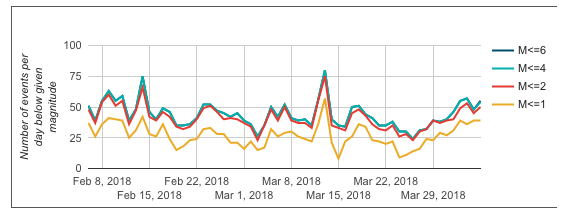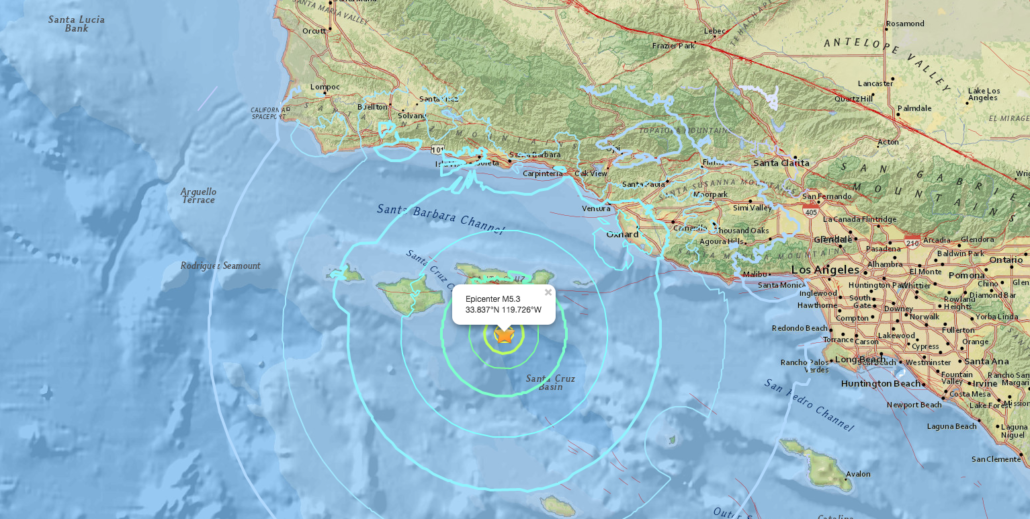The largest earthquake to jolt Southern California in over four years struck just after noon near Santa Cruz Island on Thursday. The 5.3 earthquake shook the California coast from San Luis Obispo to San Clemente. Local fire departments quickly scrambled engines to survey damages and prepare for any aftershocks but there have been no reports of injuries or damage. So far, no aftershocks have been recorded but there is a small chance that Thursday’s tremor could be the catalyst for a larger quake to occur.
- Magnitude: 5.3
- Origin Time: 05 Apr 2018 12:29:16 PDT
- Epicenter: 853, -119.695
- Depth: 9 km
- Location: 26km SW of Santa Cruz Island
- Impact: No casualties or significant damage.
- Incident Page: USGS Overview
- News Article: KTLA News
New Early Warning System Being Developed
A still underdevelopment earthquake early warning (EEW) system, from Caltech’s Seismology lab in Pasadena, gave some Southern California residents roughly 10 seconds to prepare for the tremors. The earthquake early warning system called ShakeAlert provides real-time earthquake information which will eventually generate alerts via mobile apps, email, and text. The warning time of these EEWs normally range from 0 to 20 seconds but this is time can be critical in saving lives and infrastructure. Early warnings alerts can also be integrated onto public utilities and industrial systems, automatically shutting down vulnerable systems. The crucial seconds provided by early warning systems is another layer of protection which is further multiplied by individuals taking the necessary steps to be prepared.
Be Prepared
Fortunately, Thursday’s earthquake impact was minimal but it serves as a reminder that earthquakes happen with little to no warning and in California it is not a matter of “if” but “when” the next one will come.
4 Step Plan to Become More Earthquake Safe
3: Organize disaster supplies.
4: Minimize Financial Hardship
Learn More
To learn more about earthquakes and how to prepare for them, visit these informative websites:
ShakeOut.org. The central website for the ShakeOut event also has a wealth of additional resources. The website contains information on how to hold drills suited for different environments, as well as specific safety recommendations for people with disabilities.
EarthquakeCountry.org. ECA provides information and resources to help improve preparedness, mitigation and resiliency for everyone who lives, works, or travels in earthquake prone areas.
US Geological Survey. The USGS Hazards website houses information on real-time seismic activity and information on earthquake prone areas, in addition to may other tools to help monitor the causes and effects of earthquakes.
Ready.gov. Official website of the Department of Homeland Security which has a section on earthquake specific emergency preparedness.
Sources
http://losangeles.cbslocal.com/2018/04/05/earthquake-california-los-angeles-channel-islands/
http://www.scsn.org/index.php/2018/04/05/04-05-2018-m5-3-near-santa-cruz-is/
http://www.sandiegouniontribune.com/news/california/la-me-la-quake-explainer-20180405-story.html





